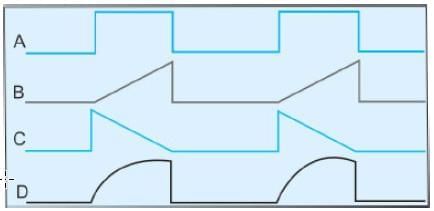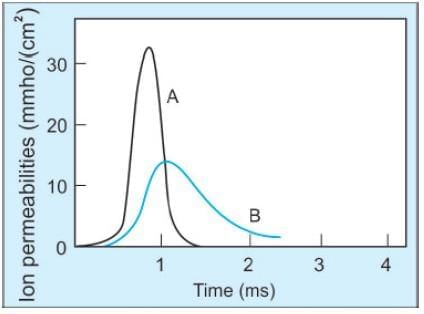NEET PG Exam > NEET PG Tests > Test: Physiology of Nerve- 2 - NEET PG MCQ
Test: Physiology of Nerve- 2 - NEET PG MCQ
Test Description
25 Questions MCQ Test - Test: Physiology of Nerve- 2
Test: Physiology of Nerve- 2 for NEET PG 2025 is part of NEET PG preparation. The Test: Physiology of Nerve- 2 questions and answers have been prepared
according to the NEET PG exam syllabus.The Test: Physiology of Nerve- 2 MCQs are made for NEET PG 2025 Exam.
Find important definitions, questions, notes, meanings, examples, exercises, MCQs and online tests for Test: Physiology of Nerve- 2 below.
Solutions of Test: Physiology of Nerve- 2 questions in English are available as part of our course for NEET PG & Test: Physiology of Nerve- 2 solutions in
Hindi for NEET PG course.
Download more important topics, notes, lectures and mock test series for NEET PG Exam by signing up for free. Attempt Test: Physiology of Nerve- 2 | 25 questions in 25 minutes | Mock test for NEET PG preparation | Free important questions MCQ to study for NEET PG Exam | Download free PDF with solutions
Detailed Solution for Test: Physiology of Nerve- 2 - Question 1
*Multiple options can be correct
Test: Physiology of Nerve- 2 - Question 2
Axonotmesis includes discontinuity in: [PGI June 2006]
Detailed Solution for Test: Physiology of Nerve- 2 - Question 2
Detailed Solution for Test: Physiology of Nerve- 2 - Question 3
Test: Physiology of Nerve- 2 - Question 4
Action potential is initiated at the axon hillockinitial segment of the neuron because: [AI 09, 01]
Detailed Solution for Test: Physiology of Nerve- 2 - Question 4
Test: Physiology of Nerve- 2 - Question 5
Synaptic conduction is mostly orthodromic because: [AI 03]
Detailed Solution for Test: Physiology of Nerve- 2 - Question 5
Detailed Solution for Test: Physiology of Nerve- 2 - Question 6
Test: Physiology of Nerve- 2 - Question 7
Unidirectional flow of a nerve impulse is at: [AI 96]
*Multiple options can be correct
Detailed Solution for Test: Physiology of Nerve- 2 - Question 8
Test: Physiology of Nerve- 2 - Question 9
Rapid axonal flow in the neurons is mediated by all except: [AIIMS Nov 07]
Test: Physiology of Nerve- 2 - Question 11
The neurons may get irreversibly damaged if exposed to significant hypoxia for: [AIIMS Nov 02]
Detailed Solution for Test: Physiology of Nerve- 2 - Question 11
Test: Physiology of Nerve- 2 - Question 12
Which is TRUE regarding nerve conduction? [AIIMS Dec 94]
Test: Physiology of Nerve- 2 - Question 13
Which of the following is TRUE about propagated nerve action potential? [AIIMS Dec 98]
Detailed Solution for Test: Physiology of Nerve- 2 - Question 13
Test: Physiology of Nerve- 2 - Question 14
A travelling nerve impulse does not depolarize the area immediately behind it, because: [AIIMS 02]
Detailed Solution for Test: Physiology of Nerve- 2 - Question 14
Test: Physiology of Nerve- 2 - Question 15
Increase in threshold level on applying sub-threshold, slowly rising stimulus is known as: [AIIMS May 08]
Detailed Solution for Test: Physiology of Nerve- 2 - Question 15
Test: Physiology of Nerve- 2 - Question 16
The increase in threshold of a receptor when a series of stimuli of subthreshold intensity are applied in succession is called: [AIIMS May 08, Nov 06]
Detailed Solution for Test: Physiology of Nerve- 2 - Question 16
Test: Physiology of Nerve- 2 - Question 17
Equal strength stimulus of which type is least likely to produce a nerve stimulation? [AIIMS May 02]

Detailed Solution for Test: Physiology of Nerve- 2 - Question 17
Test: Physiology of Nerve- 2 - Question 18
Identify the ions based on the conductance of a neuron during action potential generation:(May 18)

Test: Physiology of Nerve- 2 - Question 20
Person wakes up with pain, paresthesia, tingling of the arms. He had slept with arm below the head. Which fibers are involved?
Detailed Solution for Test: Physiology of Nerve- 2 - Question 20
Detailed Solution for Test: Physiology of Nerve- 2 - Question 21
Detailed Solution for Test: Physiology of Nerve- 2 - Question 22
Detailed Solution for Test: Physiology of Nerve- 2 - Question 25
Information about Test: Physiology of Nerve- 2 Page
In this test you can find the Exam questions for Test: Physiology of Nerve- 2 solved & explained in the simplest way possible.
Besides giving Questions and answers for Test: Physiology of Nerve- 2, EduRev gives you an ample number of Online tests for practice
Download as PDF



















